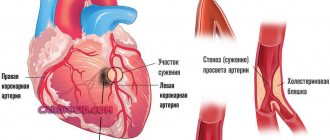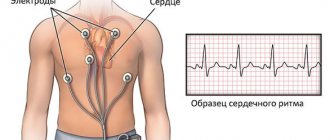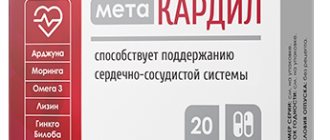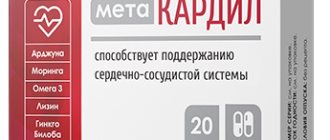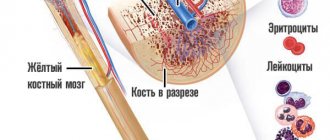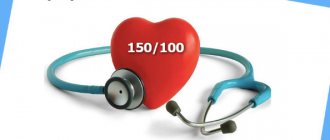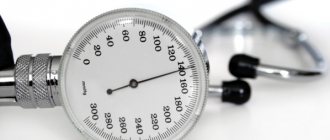The level of blood pressure directly indicates the general condition of the body - the functions of the nervous, cardiovascular, endocrine and renal systems. When the tonometer readings increase, especially if they are recorded regularly, any person begins to worry about their health.
Usually both indicators, the upper (systolic) and lower (diastolic) jump at the same time. But it also happens that the device records only high lower pressure, and the upper one remains within the normal range or increases slightly. What do these numbers on the tonometer mean, what diagnosis can the doctor make and how to deal with the problem - we will tell you further.
What is isolated diastolic hypertension?
Blood pressure is determined by two indicators - the upper
and
lower
. Upper pressure is measured at the moment the left ventricle ejects arterial blood into the aorta. An increase or decrease in the indicator indicates the contractility of the heart and the condition of the coronary vessels.
In everyday life, high lower (diastolic) pressure is called “renal”. It quickly leads to overload of the entire body, wear and tear of blood vessels and the development of atherosclerosis.
Lower pressure is an indicator of the condition of the peripheral vessels at the moment when the heart muscle relaxes and the aortic valve closes.
If their resistance is high, then the lower pressure will be high. The normal limits for it are 60-80 mmHg. An increase in only the lower pressure with normal or reduced upper pressure is called isolated diastolic hypertension.
Medication
To relieve excessive stress on the walls of blood vessels, doctors prescribe drugs from the following groups:
- Beta blockers
. The pills block the flow of adrenaline to the heart muscle, causing the heart to relax. Contractions become less intense and the interval between them increases. As a result, blood pressure and pulse decrease. - Calcium antagonists
. Calcium plays a role in transmitting receptor signals to cells, so elevated levels of calcium cause cells to contract and tense too much. The supply of calcium through calcium channels into the blood vessels and heart is inhibited. A decrease in calcium levels “relaxes” the cells, and blood vessels dilate. - ACE inhibitors
. The drugs block certain enzymes. When the vessels stop receiving it, the patency gradually increases and the pressure drops, the load on the heart decreases.
Medications of a suitable group are prescribed by a cardiologist after examination.
[media=
https://youtu.be/7aW439Umwxg
]
Causes of isolated diastolic hypertension
Arterial hypertension has a primary and secondary origin. Primary hypertension is called essential and develops as an independent disease. Secondary occurs as a symptom of another disease. Isolated hypertension is always secondary.
Human blood is a liquid connective tissue and ensures the vital functions of the body. The health of almost all organs and systems depends on its condition. Read more in the article: “blood thinning drugs.”
The causes of high lower pressure may be the following diseases:
| Cause | What's happening? |
| Kidney diseases or congenital abnormalities | High vascular tone, in particular the renal artery, disrupts the blood supply to the kidneys. In response, they trigger a chain of biochemical reactions, as a result of which a substance that retains sodium in the body and constricts blood vessels begins to be intensively produced. |
| Adrenal or pituitary gland dysfunction | These organs are responsible for the synthesis of hormones. Diseases or neoplasms on them lead to hormonal imbalance. |
| Thyroid diseases (hypothyroidism, thyrotoxicosis) | Insufficiency or excess synthesis of thyroid-stimulating hormones. |
| Pregnancy, menopause or menstruation | During these periods, women's bodies retain fluid. The reasons are changes in the ratio of female sex hormones. Excess fluid can increase lower blood pressure. |
| Hernia | With pathological changes in the intervertebral discs, the vertebral arteries are compressed. In response, the brain gives a command to increase blood pressure. |
| Atherosclerosis | Narrowing of blood vessels due to their “contamination” with sclerotic plaques, reducing their elasticity and impaired permeability. |
| Hypertension 3 degrees, myocardial infarction | Increased peripheral vascular resistance and a simultaneous decrease in myocardial contractile function. |
Advertising:
These are internal causes of isolated diastolic hypertension. There are also external ones that can be adjusted:
- cigarettes and alcohol;
- low physical activity;
- overweight;
- addiction to spicy and fatty foods;
- low stress resistance.
Diet
Nutrition not only helps the body feel full, but also regulates a huge number of reactions in the body. Subject to the principles of a healthy diet, a person receives all the necessary amounts of vitamins and microelements from food. To lower blood pressure, the following should prevail in the diet:
- fresh berries and fruits;
- raw vegetables and herbs;
- porridge (barley, buckwheat, corn, etc.)
- dairy products and fermented milk (cottage cheese, kefir, sour cream);
- lean meats (poultry, beef);
- low-fat fish (can be sea or river: cod, carp, bream, pollock, pike perch, hake, pollock, flounder, pike);
- honey or sweetener instead of sugar;
- wholemeal bread;
- maybe a little dark chocolate.
[media=
https://youtu.be/6ZF1lDhhPIE
]
Despite the dietary nature of these products, you can prepare many interesting and tasty dishes from them. Fish and poultry should be baked in the oven without oil or with a minimum amount. You can make salads from vegetables or bake them, and eat fruits raw or make delicious smoothies from them. You can make excellent yoghurts, casseroles, or porridges from fermented milk products. Most patients note that with proper nutrition, not only does their blood pressure stop rising, but their overall well-being also improves.
It is worth limiting your consumption:
Advertising:
- alcoholic drinks;
- baked goods and sweets (sweets, cakes and cookies with cream, milk and white chocolate);
- fatty and fried foods;
- too hot, sour or spicy;
- salt - not completely, but you can’t eat too salty (salt retains fluid in the body, which causes fluid in the body to increase.
You should not completely exclude salt, spices and oil from your diet. There must be balance in nutrition. You can create an individual diet and general nutrition system:
- On one's own
— you can find on the Internet the basic principles of its preparation and daily diet templates. It is important to take into account such characteristics of your body as weight, height, age and general condition of the body. - Contact a specialist
- a nutritionist has a huge amount of experience in analyzing the current state of the body and drawing up a permanent or short-term nutritional structure.
It is important to approach this procedure competently and eat right all the time.
Why is isolated diastolic hypertension dangerous?
Stably high diastolic pressure over time leads to “full-fledged” arterial hypertension, that is, to an increase in upper pressure with all the ensuing consequences in the form of heart attacks and strokes.
In times of crisis, the issue of cheaper substitutes for expensive drugs is very relevant. An example is Plavix and its analogues - what is better to choose, what reasons to follow. Read more in the article: “Plavix and its analogues.”
High numbers of lower pressure mean that the heart is working hard, as it cannot relax.
At the same time, the heart muscle uses up its resources at an accelerated rate. Without blood pressure control and treatment, even death cannot be ruled out.
An increase in lower pressure is an SOS signal from the body about serious health problems. It cannot be ignored; an urgent medical examination is necessary.
Malignant hypertension poses a particular danger
when the lower pressure readings go off scale beyond 130 mm. It is always symptomatic. In this case, the patient needs urgent treatment of the underlying disease.
Advertising:
Women of reproductive age who are prone to obesity should pay maximum attention to their blood pressure. According to statistics, they are the ones who most often suffer from isolated diastolic hypertension.
Dangerous symptoms that require medical attention
Any symptom is considered dangerous. Hypertension is generally unpredictable. Therefore, you need to pay attention to any signals from the body.
Including these:
- Dizziness of a long duration. There may be cerebellar ischemia.
- Complete disorientation in space. The patient can only lie down.
- Intense headache. Usually the pressure is accompanied by squeezing in the occipital region. Variations are possible.
- Nausea and vomiting. Reflexive in nature.
- Fainting. Syncope. Especially of a repeated nature.
- “Disobedience” of arms and legs, half of the body.
- Palpitations or, conversely, a decrease in heart rate to a level less than 60 beats per minute.
- Facial distortions.
- Chest pain of moderate intensity. Pressing, aching character. They radiate to the stomach, shoulder blade and left arm. Discomfort seems to flow through the veins.
- Impaired speech function, hearing, vision, smell, including phantom odors. Neurological focal symptoms characteristic of stroke and other organic brain lesions.
All symptoms require qualified assessment.
Symptoms and diagnosis of high blood pressure
How do you know if your kidney pressure is high? If it grows to 90-100 mm, there may be no symptoms. Pathology is detected during preventive examinations or medical examinations. At higher rates, characteristic features are:
- difficulty breathing - shortness of breath and inability to take a deep breath;
- excessive cold sweat;
- rapid pulse;
- dizziness;
- pain under the shoulder blade or in the chest.
In addition, there may be a headache, swelling of the face and limbs. With a prolonged increase in pressure, morning swelling, periodic ringing in the ears, a constant desire to drink, and tachycardia are characteristic.
Advertising:
In addition to subjective symptoms (according to the patient), there are diagnostic methods - ECG, blood tests (general and biochemistry). The doctor first finds out why diastolic pressure rises. He recommends that the patient keep a diary - regular self-monitoring of blood pressure (at least two measurements per day). Daily changes in indicators also have diagnostic value
[media=
https://youtu.be/I7E1RJSbYXE
]
Treatment methods
Under no circumstances should you self-medicate. Initially, you should consult a doctor and undergo an examination, because you need to find out the cause of the disorder. If hypertension is secondary, then it is necessary to treat the primary pathology that caused the pressure surge. Treatment also needs to be carried out under the supervision of a doctor. Experts most often prescribe a set of the following health-improving activities:
- weight loss (if necessary);
- proper nutrition;
- regular physical activity (physical therapy, walking);
- compliance with the regime (alternating work and rest);
- regular walks in the fresh air;
- taking medications;
- healing procedures.
All of the above points must be done regularly. In this case, there is a gradual normalization of internal processes in the body.
[media=
https://youtu.be/I7E1RJSbYXE
]
How to treat high diastolic pressure?
Treatment of high lower pressure, including the use of folk remedies at home, can only be prescribed by a doctor. It is mainly aimed at eliminating the causes of the increase. Therapy involves an integrated approach:
- normalization of nutrition with sufficient vitamins and minerals;
- reducing salt intake;
- increased physical activity;
- proper rest - physical and emotional;
- symptomatic treatment with medications.
Advertising:
The most commonly prescribed medications are diuretics - Furosemide or Veroshpiron. Furosemide is accompanied by taking drugs that replenish the loss of potassium and magnesium (Asparkam). Veroshpiron is a potassium-sparing medicine.
Depending on age and existing cardiac pathologies, tablets that inhibit ACE synthesis (Enalapril), beta blockers (Metoprolol, Bisoprolol) and calcium channel blockers (Diltiazem) are used. A blocker of agniotensin II, which is formed in the blood as a result of the release of renin by the kidneys (Losartan), is also used.
First aid
What to do if the “renal” pressure has increased significantly? A person may need emergency assistance, which is provided until the ambulance arrives.
First of all, the patient is provided with rest; he can be placed face down or in a semi-lying position.
One of the striking symptoms is shortness of breath, so the head end should be in an elevated position so as not to provoke suffocation. It is advisable to open a window or point a fan at the patient.
Cold can be applied to the back of the head and collar area, but for no more than 15 minutes. Massaging this area will help improve blood flow.
As a distraction procedure, do a warm foot bath. Massaging the earlobes also helps. In severe cases, the patient needs to take nitroglycerin (under the tongue).
Symptoms
{banner_banstat2}
Lower pressure of 100 or more units can occur latently if it occurs rarely and for a short time. But much more often such hypertension is accompanied by severe symptoms and warns of the development of hypertension:
- prostration;
- migraine;
- noise in ears;
- nausea;
- faintness;
- disorientation in space;
- insomnia.
The clinic is correlated by gender, age, constitution.
